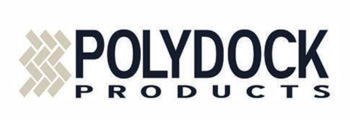Mar 22, 2017
Harpt Lake Public Boat Landing & ADA Pier
PWS was selected to install a new ADA compliant pier and fishing station at the Harpt Lake Boat Landing in Manitowoc County. The condition of the old Harpt Lake pier had deteriorated over the years. Due to safety concerns and new ADA regulations, it had to be replaced.
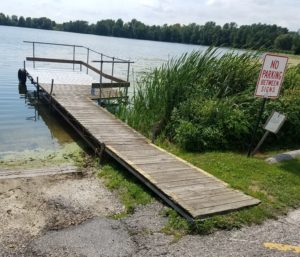
Harpt Lake Public Landing (Before)
On Oct. 30, the installation of the new ADA compliant pier on Harpt Lake was completed by PWS. The new pier is now completely ADA accessible and allows people with wheelchairs and handicaps to enjoy fishing and boating throughout the season. The new pier has a safety rail, bench, curbs and fishing station.
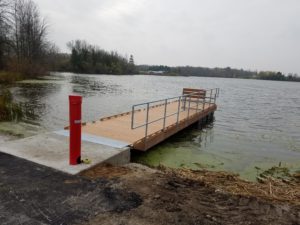
(After) Harpt Lake Boat Landing
Follow us on our Facebook page for more updates.
Found this article helpful? Call Jerry at 920-493-4404 or Email Jerry@wisconsinpws.com for more information. Also go to “NEWS” on any page of our website for a complete list of articles meant to keep you informed on the latest product information and maintenance issues.
Mar 12, 2017
Plastic Decking is a Major Investment
The plastic decking on a dock is a major portion of the dock investment. It does take time and effort to maintain it properly. This is particularly important on marine structures vulnerable to the elements. Most plastic decking requires yearly maintenance to appear attractive for years to come.
Why does my decking appear to be dirty and what causes it?
Mold/mildew is the common term used to describe a growth on the surface of matter. It’s caused by fungi, especially in the presence of dampness. Under a microscope, mold has an octopus-like structure. Its legs attach to a surface in a web-like manner. Once a mold has successfully colonized, it releases thousands of new spores. This growth makes your deck appear dirty over and over again, making your deck appear dirty.
What makes the mold grow?
Molds need three things to grow:
- Food,
- Moisture and
- Temperate weather.
When the spores are in a favorable environment, they will germinate. The spores settle out of the air or are deposited by rainwater and wet feet. As a result, they will be more prevalent on horizontal surfaces (like your decking panels). The colonies do not migrate, but rather establish colonies and release even more spores.
Plastic decking is inorganic but nature deposits “food” and moisture in the form of rainwater. Birds deposit further nutrients and you carry moisture, suntan lotions and dirt from the environment and deposit it on the decking.
While plastic surfaces appear sleek and impermeable, plastic docks still cannot escape the mold/mildew cycle. Docks still need to be cleaned with regularity. This is particularly true with HDPE plastic decking (usually recycled, solid plastic boards.)
Without damaging the environment, how can I clean the mold and common dirt off of my plastic decking?
We all know that we must avoid introducing pollutants, including soaps and most other commercially available cleaning products into our waterways. Still, you do have some options.
Cleaning methods for Plastics
Note – In all cases mentioned here the use of safety gloves, face masks and eye protection is highly recommended.
Use a natural biodegradable cleaning solution that removes buildup without damaging the decking material or the environment.
Among your choices are:
- Use a Pressure washer; or
- Hand scrub the decking with a commercially available bio-degradable cleaner like “OxiClean”
- NEVER use chlorine bleach
Pressure washers require patience and care
The use of a pressure washer must be done carefully even though there is no “grain” involved in the decking. Too much pressure when spraying can cause physical damage to the decking material.
Never allow the pressure head to get closer than 12 inches to the surface. Use a “fan” nozzle with a 20 degree tip to reduce the pressure. Never use more than 1800# of pressure. The less pressure at the sprayer head, generally the closer you can get to the surface.
Hand scrubbing
Using a hand brush with natural or plastic bristles and a commercially available product like “OxiClean” is a safer way to wash the decking. “OxiClean” breaks down to oxygen, water and soda ash so it won’t harm the environment. OxiClean uses oxygen ions to neutralize stains and dirt.
Many scrub brushes allow you to use a pole handle so you do not have to kneel down and it will be more comfortable for you. Do not press so hard that the bristle bend to the side as the real cleaning takes place at the ends of the bristles. If there is a wood like pattern in the decking surface try to follow that direction. This allows you to get deeper into the grooves with less effort.
Get into the deck spacing as far as possible to make the decking look even better. Before the decking dries, rinse the decking with clear water.
If the product you choose has oxalic acid (very corrosive) or chlorine bleach we strongly recommend that you do not use it because it is not bio-degradable. It could also get you a major fine from the DNR.
As an extra caution check the label of any product you plan to use to see if it contains harmful ingredients like hypochlorite bleach. ALWAYS use the smallest concentration to do the job while observing safety protocols.
Found this article helpful? Call Jerry at 920-493-4404 or Email Jerry@wisconsinpws.com for more information. Also go to “NEWS” on any page of our website for a complete list of articles meant to keep you informed on the latest product information and maintenance issues.
Feb 24, 2017
What is a Pressure Ridge?
A pressure ridge is the result of a change in temperature which causes the ice to crack and form a floating ice sheet. This formation is usually located a few hundred feet off the shoreline. This is the beginning of a pressure ridge.
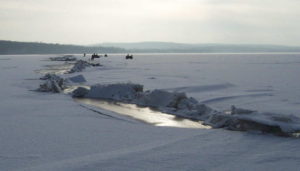
Pressure Ridge
The ice near the shore is anchored securely to the shoreline. The floating ice on the outer side of the crack separates and then is moved back to the joint by the winds. The resulting pressure builds up and crushes the edges into pieces called rubble.
The rubble forms the “Keel” of a ridge, which as the name implies, is below the water line. The loose rubble accumulates and builds up until it reaches the bottom of the water. After reaching the bottom the remaining crumbed ice at the surface begins to move vertically. This forms the “Sail” portion or upper part of the pressure ridge. The “sail” is the part you actually see on the surface of the ice. It can be a foot high or several feet high.
The pressure ridge can form very rapidly especially when the wind direction shifts. Since the rubble below is exposed to non-freezing temperatures, it can melt away.. This will leave a very weak and fluctuating joint at the surface.
What is an Ice Shove?
Ice shoves occur during warmer weather also- normally in late February and into March. They require a steady or gusty, strong wind over a period of time.
The ice shove occurs when strong winds rapidly push free floating ice towards the shore. Strong winds from the same direction over, say, a 12 to 24 hour period, are enough to drive huge areas of ice onshore. As these moving masses of ice move towards the shoreline they will begin piling up when they encounter resistance from the shoreline or other obstacles. The resulting ice shove can reach heights of 50 feet.
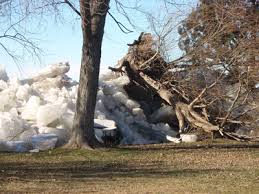
An ice shove has tremendous power and have been known to push houses off their foundations and uproot large trees. Shoreline barriers like trees, seawalls and shallow cliffs are not a challenge for a ice shove. The ice simply piles up as shown above until it flows over the object or crushes it. It will continue on its journey as long as the wind continues to blow. (See the video at the end of this article for a demonstration of an ice shove)
Ice Shoves can affect a small area of shoreline or vast distances depending on the force of the wind and the strength of the ice. At times, one or two properties are affected while the adjoining properties see no movement at all.
What measures can you take to protect your waterfront equipment?
Simple – In the fall move your docks and lifts far enough back that the ice normally will not get to it. In doubt? Watch what your neighbors do. They know how far back to go.
Here’s an example of what PWS has had to do to prevent damage from ice shoves when there is little or no shoreline:
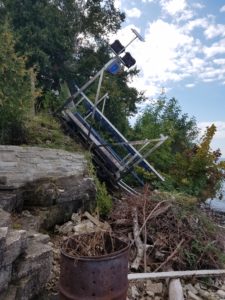
Boat Lift being removed for winter
This lift and accompanying dock had to be raised to the top of a ledge because there was inadequate shoreline available to protect the equipment from any ice movement.
For more information check this video to see an actual ice shove in action: www.youtube.com/watch?v=Pf5pWz7uRt4
Found this article helpful? Call Jerry at 920-493-4404 or Email Jerry@wisconsinpws.com for more information. Also go to “NEWS” on any page of our website for a complete list of articles meant to keep you informed on the latest product information and maintenance issues.








